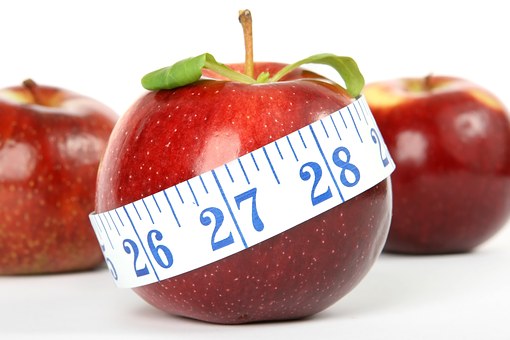Calories in Food have gained a notorious reputation – everyone trying to lose weight can’t seem to burn enough, and everyone wanting to gain weight can’t seem to intake enough. I personally find the effect of calories in food on our body and weight really fascinating as well as confusing.
But first, let’s understand what calories are and specifically what role the calories in food play.
Calories
A calorie is simply a unit that we use to measure energy. The nutrients present in our food i.e. proteins, fats, and carbohydrates etc. provides our body with energy or calories to perform its functions.
If I want to calculate the amount of energy I require daily, that would be measured in calories. Nutrition labels also provide information about the number of calories present in a particular food.

Calories in Food – Measurement
Calories in Food
You’ll have a hard time coming across a food item that is made up of solely one nutrient. Every food item is made up of different amounts of proteins, fats, and, carbohydrates and therefore provide a different amount of calories.
The amount of calories per gram for each macro nutrient is as follows:
- Carbohydrate contains 4 calories
- The protein contains 4 calories
- Fat contains 9 calories
Although alcohol isn’t a nutrient itself, it still provides calories. 1 gram of Alcohol contains 7 calories.
Apart from these major nutrients, your food has water, vitamins, minerals, fiber, and cholesterol etc. These do not provide any calories but are essential in performing different functions of a healthy body.
RECOMMENDED FOR YOU
The Truth About Non-Vegetarian Diet in 3 Minutes
Understand Body Mass Index aka BMI Before You Regret!
Calculating Calories in Food
You know by now that most foods are a combination of proteins, fats, and carbohydrates in addition to the micro nutrients plus water.
To calculate the calories in the food we multiply the amount of each nutrient in grams, with the number of calories it provides and sums it up.
Suppose you want to calculate the number of calories in a bowl of chicken noodle soup which has 3 grams protein, 7 grams carbohydrates and 2 grams of fat. You can calculate the total calories as under:
Calories from proteins: 3 grams x 4 calories/gram = 12 calories
Calories from carbohydrates: 7 grams x 4 calories/gram = 28 calories
Calories from Fats: 2 grams x 9 calories/gram = 18 calories
Total Calories = 12 + 28 + 18 = 58 calories.
Most foods are made up of at least 2 or more nutrients but when one of the nutrients is present in a comparatively large amount the food is categorized as that.
This is why you associate bagels with carbohydrates although it also contains proteins, and chicken breast is popularly termed as a protein food, although it also has fats which contribute to the total calorie count.

Calories in Food – Fitness Devices keeps a check
Empty Calorie Food
Empty calorie foods are foods which only provide the calories but not the essential nutrients such as vitamins, minerals, proteins, and fiber. These foods are primarily made up of only sugar, fats, and oils etc.
The best example for this is candy or a can of soda. Consuming them in large quantities can result in weight gain and too much consumption can also have adverse effects on health.
Negative Calorie Food
I know this is an intriguing term and truly an intriguing phenomenon. Negative calorie foods are great for weight loss. These foods are rich in nutrients but extremely low on calories which can make consuming these a win-win situation for you.
Examples include celery, berries, grapefruit, carrots, tomatoes, cucumbers, zucchini, and broccoli etc.
High-Calorie Foods
While you might be someone who is struggling to lose weight, there are also many people around us who are trying to gain. If you have a small appetite and cannot eat all day long then high-calorie foods are a blessing in disguise for you.
These foods pack a lot of calories even when consumed in small portions. Examples include Avocado, butter, cheese, whole eggs, whole grains, nuts, and sweet potatoes etc.
Conclusion
Carbohydrates, fats, and proteins provide with different amount of calories in food. Our body burns these calories to acquire energy and perform its daily functions. The amount of calories required by our body depends on our age, gender, and occupation etc.
Finally, to summarize I suggest you
So, plan and follow your calories accordingly.
If you enjoyed this post, I’d be very grateful if you’d help it spread. Cheers!


2 comments
Good way of explaining, and nice post to obtain information regarding my presentation subject, which i am going to present
in school. Maglia
Hi Maglia,
I’m glad I could add some value to your school presentation. Keep loving for many more posts to come. Cheers!